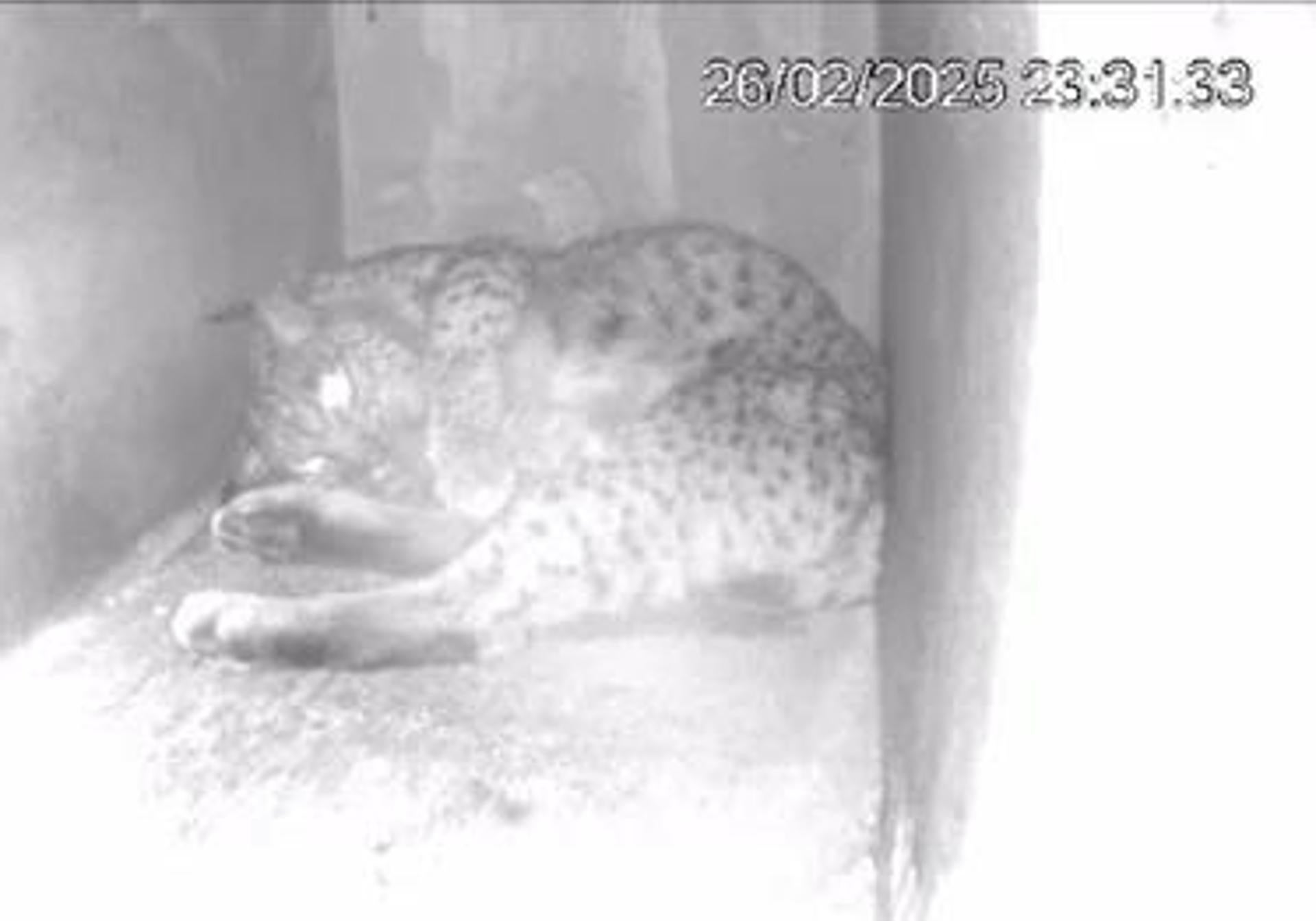Spain's first Iberian lynx cub of the season born at breeding centre in Cáceres
Hubara gave birth on 26 February in Zarza de Granadilla to a single kitten after a 65-day pregnancy
J. A. G.
Cáceres
Monday, 3 March 2025
The first birth of the Iberian lynx's breeding season was recorded at the captive breeding centre in Zarza de Granadilla (Cáceres) on Wednesday 26 February. At 7.44pm, Hubara gave birth in her den to a single kitten after a gestation period of 65 days. According to a statement issued by Spain's Ministry for Ecological Transition (Miteco), the birth marks the beginning of a breeding season "which is expected to be a promising one".
The birth went smoothly and the mother is currently taking care of her kitten, which was conceived with the male lynx Hocico. "Hubara has not left the kitten's side, providing it with all the necessary care, from grooming and nursing to keeping it warm. The centre's veterinary and technical teams are monitoring the progress of both," said Miteco.

The captive breeding centres of the Iberian lynx play a fundamental role in the 'ex situ' conservation programme, which monitors species outside their natural habitat. The centre has been key in the recovery of this emblematic endangered species. During the current breeding season, 14 of the 31 pairs in the programme are in the two centres managed by the OAPN (the natural parks' organisation): El Acebuche (Huelva) and Zarza de Granadilla (Cáceres).
These facilities have the appropriate conditions for captive breeding, with spaces that replicate their natural habitat and minimal intervention protocols to prevent the cubs from becoming habituated to humans.
More than two thousand individuals
Thanks to such programmes, the Iberian lynx has transitioned from "endangered" to "vulnerable" according to the International Union for Conservation of Nature (IUCN) Red List. However, the species still requires active conservation measures.
Since the programme began, captive-born kittens have played a crucial role. Many of them have been released in strategic areas of Andalucía, Castilla-La Mancha, Castilla y León, Extremadura and Portugal, contributing to population growth and increasing the genetic diversity of the species.
Over the next few months, further births are expected in the breeding centres, reaffirming the effectiveness of the programme in consolidating the recovery of the Iberian lynx.
The total lynx census reaches 2,021 specimens, with 1,299 adults or sub-adults and 722 cubs born in 2023. After surpassing 1,000 specimens in 2020, the Iberian lynx population has doubled in just three years.
